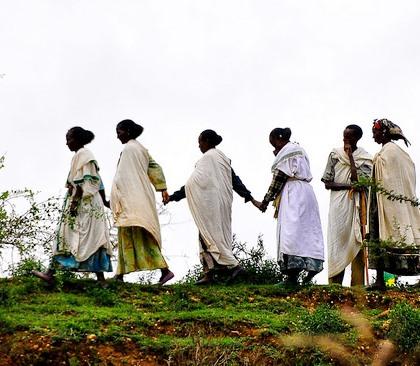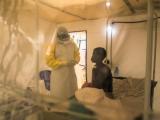In studies that shed more light on potential Ebola exposure, almost half of the people sickened with the virus in Sierra Leone had contact with a suspected or confirmed case, with many having attended funerals, and a survey in rural Ghana found that nearly half of the population regularly visits bat caves.
The two exposure routes are notable, because bats are thought to be a reservoir for several pathogens that can infect humans, including Ebola and Middle East respiratory syndrome coronavirus (MERS-CoV). And funeral rituals in West Africa—especially touching the bodies of the deceased— have played a role in the rapid spread of the disease.
The reports appeared yesterday in two different medical journals. The Sierra Leone study, by an international team, appeared in Clinical Infectious Diseases and the bat study, by a team from Ghana and Germany, was published in Emerging Infectious Diseases.
Risks from funeral rituals
In the Sierra Leone study, researchers examined epidemiologic data from Ebola infections in the country that were reported between May 23, 2014, and Jan 31, to learn more about the demographic patterns of those sickened by the virus and how they were exposed.
They used two surveillance sources, Sierra Leone's viral hemorrhagic fever database and the health ministry's situation reports. During the study period, 8,056 lab-confirmed Ebola infections were reported.
Exposure data revealed that 47.9% of people with confirmed infection had contact with a suspected case or a sick patient, and 25.5% had attended a funeral. Of those who attended a funeral, 66.2% reported touching the body.
Researchers said the findings are useful for crafting prevention strategies.
Funeral rituals in West Africa often involve touching the body, and because virus levels are highest in people with severe infections and in corpses, the practice is thought to have played a major role in fueling the spread of Ebola. Safe burial teams and changes to funeral practices have been a key part of curbing the spread of the virus in affected areas.
The group's analysis also provides a snapshot of the epidemiology of the disease in Sierra Leone: the median age was 28 years, and 51.7% of patients were female. Clinically, 90.4% reported fever, 88.3% reported fatigue, and 87% had appetite loss. Other common symptoms were headache, joint pain, vomiting, and diarrhea.
Ebola incidence was highest in November, at 7.5 per 100,000 population each week, and in January decreased to 2.1 per 100,000 population.
Frequent bat exposures
To shore up gaps in knowledge about interactions between humans and bats in West Africa, researchers visited three rural Ghana communities from 2011 to 2012. They interviewed local leaders, observed activities at local caves, conducted a household survey, and held community focus groups.
Overall, they learned that 46.6% of residents regularly visited bat caves, that 37.4% had been bitten, scratched, or exposed to bat urine, and that 45.6% ate bat meat, most likely from fruit bats.
When comparing people who did and didn't eat bat meat, the team found that men and farmers were more likely to consume bats. They also found that people who were more likely to visit bat caves were older and male.
Some of their observations included a bat-catching activity that was part of one community's festival. Caves were often near water sources and served as spiritual sanctuaries.
Roasted and fried bats were commonly sold in markets, with most of the meat coming from local hunters. Some of it, however, came from other regions of Ghana, and even from Ivory Coast.
Ebola ETU benefits
In other research developments, investigators from the US Centers for Disease Control and Prevention and their Liberian counterparts found that admission to Ebola treatment units (ETUs) dramatically improved survival and drove down the number of secondary cases. Their findings, based on an analysis of nine outbreaks in Liberia in 2014, were published in a Jul 14 early edition of Emerging Infectious Diseases.
They found that the reproduction number dropped 94%, from 1.7 to 0.1, after interventions began. When they looked at the impact on secondary infections, they found that they were 90% lower for those admitted to an ETU compared to those who died in the community.
The case-fatality rate was 68%, and the investigators found that ETU admission halved the deaths.
The researchers noted that Ebola activity in Liberia dropped off rapidly when secondary infections declined to 0.1 per case.
Though ETU admission clearly helped curb the disease in Liberia, the authors said the steps communities took to protect themselves probably contributed to some of the decline, although their impact is difficult to measure.
See also:
Jul 15 Clin Infect Dis abstract
Jul 15 Emerg Infect Dis report on bat exposures
Jul 14 Emerg Infect Dis report on response in Liberia

















